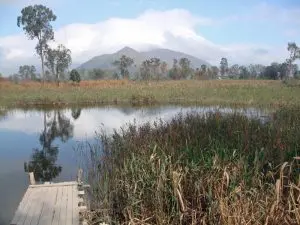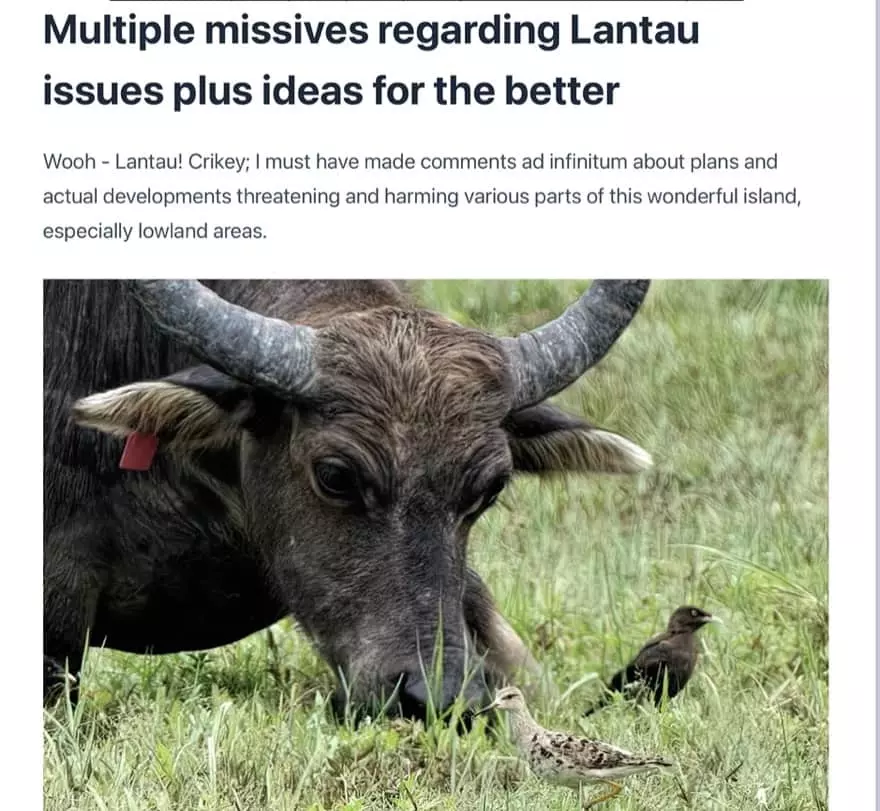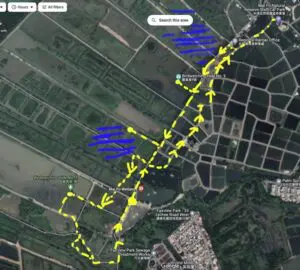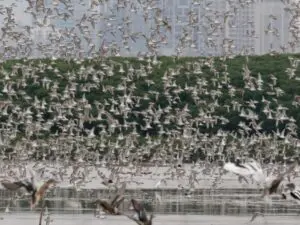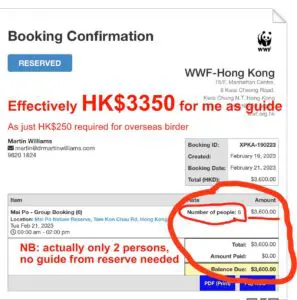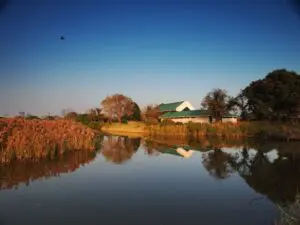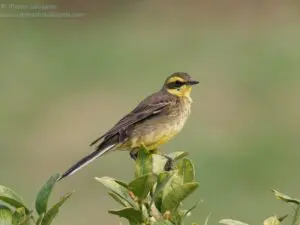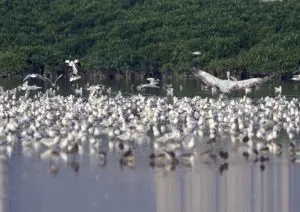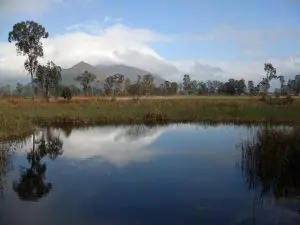Mai Po Marshes has become one of the world’s greatest wetland reserves – and a place I’ve come to know well over the years.
Indeed, Mai Po was a key factor that enticed me to come and live in Hong Kong, in January 1987: after leading bird migration studies at Beidaihe on the China coast, I thought it could be a model for encouraging bird protection.
Though its fame was already spreading, Mai Po was a very new reserve. I learned from the redoubtable Mary Hotung Ketterer, honorary director of the World Wide Fund for Nature Hong Kong – as it then was – that when the local office of WWF was established in 1981, there was a decision to raise funds for local work, and Mai Po was chosen as the first project.
The next year, the government approved establishment of the reserve, and funds were raised to acquire and manage three of the 24 gei wai – traditional shrimp ponds – at Mai Po. Work in 1983 included construction of a concrete footpath, and a small wooden hut as the first Visitor Information Centre.
Work began in earnest in 1985, by which time David Melville was Mai Po Project Manager. An education officer and field staff were appointed, and two gei wai were joined together in order to create a shallow lagoon that might attract shorebirds when high tide pushed them off the mudflats in neighbouring Deep Bay.
As I arrived, this new lagoon had become overgrown with reeds, making it unsuitable for shorebirds. Ketterer was undettered, ordering that the reeds be burnt. The lagoon was cleared in time for spring migration, and proved a magnet for shorebirds, with flocks roosting en masse during high tides.
Facilities for visitors were added as well. On my first visit to Mai Po, I walked the newly completed boardwalk – a walkway through mangroves by the reserve, to an observation hut overlooking Deep Bay.
Despite the name, this bay is a shallow estuary – making a deep indentation on the coast – and the tidal mudflats teem with life such as worms, crabs and mudskippers, in turn attracting tens of thousands of migratory waterbirds. Birds that day included six Dalmatian Pelicans, huge birds with almost bucket-like beaks for scooping fish.
Black-faced Spoonbill: from zero to super rare hero
Another annual visitor was Black-faced Spoonbill. But while the pelican was listed as a globally endangered species, the spoonbills attracted little attention among Hong Kong birdwatchers, as they were thought to be relatively common in China. I saw four that first day, and soon became used to seeing spoonbills, and thinking little of them.
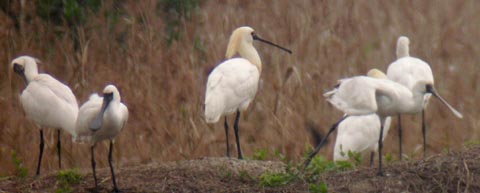
This was until Hong Kong based birdwatcher Peter Kennerley published the results of an investigation into black-faced spoonbill. He had been on birdwatching trips to China that found few of these spoonbills, so gathered all information he could find from across the spoonbill’s known range in east Asia. In 1990 he arrived at an estimate for the total world population: 288.
Yes, just 288! So instead of being common anywhere, black-faced spoonbill was recognised as being a very rare bird, with numbers so low it was promptly rated critically endangered. And with Kennerley discovering the Deep Bay area was one of the two main winter sites, black-faced spoonbill became Mai Po’s star bird.
The pelican and seven other globally endangered birds were also regular visitors to Mai Po. In 1995 these, plus important numbers of commoner species, and invertebrates like a crab that’s unique to the area, led to Mai Po and Inner Deep Bay being listed as a Ramsar Site, under a convention on Wetlands of International Importance. According to this, the government should ensure wise use of the wetland.
Mai Po the little appreciated jewel in crown of WWF Hong Kong
Mai Po Marshes Nature Reserve has certainly been wisely looked after. Helped by sponsors and the government, WWF Hong Kong can now manage the entire area, enhancing habitats for wildlife. In my view, the level of just 30,000 visitors per year is too low, though I know overcrowding would be destructive.
But around the reserve, there have been harmful developments, such as the rapid growth of Shenzhen, and creation of Tin Shui Wai where there used to be marshes and fishponds. Plans for housing projects at nearby Nam Sang Wai and Fung Lok Wai are worrisome, and development of the nearby Lok Ma Chau Loop could have negative repercussions, and prove very unwise.
Despite the development pressures, bird numbers have remained reasonably stable, with black-faced spoonbills increasing. Some species are declining, however; a handful appear headed for global extinction.
There have been personnel changes at WWF Hong Kong, too – even the organisation has dropped the “Nature” from its name. After current CEO Adam Koo took the helm, he wrote a message that mentioned brand twice, yet omitted mention of Mai Po, as if not appreciating the reserve is the jewel in the crown of WWF Hong Kong, and that no other WWF office manages a reserve.
I tried questioning Koo about this, and only received a reply from WWF Hong Kong’s director of conservation, Gavin Edwards, noting, “Mai Po has become a well-known conservation success in Hong Kong.”
Well, almost… In reality, Mai Po has become known worldwide as an outstanding place for birds. After 30 years, it’s somewhere all Hongkongers should be proud of, a reserve that’s truly world class.
Happy anniversary, Mai Po!
Written for Ming Pao Weekly; published [in Chinese] on 19 October 2013.
Video I helped make:
Suppose you were ageing and with various ailments, yet still attractive to many; and you were in the care of someone who is doing nothing…
After I posted in a birding whatsapp group about issues with the Long Valley Nature Park, I was surprised at a response, sent to the…
If you’re among the privileged few with access to the inner sanctum of Deep Bay in northwest Hong Kong – a viewing hide at the…
If you’re unfamiliar with the Deep Bay wetland shared by Hong Kong and Shenzhen, you might wonder about the significance of the expanse of fish…
Here’s a film I made about Mai Po, using footage James Reynolds and I shot for the reserve, in English, Cantonese and Mandarin versions: Mai…
Yes, this is may seem impossible, ridiculous; but continuing with current state of affairs doesn’t look good for long term future of Deep Bay wetlands.…
Last decade, the future looked bright for the Deep Bay wetland, in northwest Hong Kong. [I wrote this for the South China Morning Post in late…
The WWF Hong Kong managed Mai Po Marshes Nature Reserve has undergone an infrastructure upgrade, with a HK$347 million grant from the Hong Kong Jockey…
With the apartment blocks of Yuen Long and Tin Shui Wai to the southwest, Fairview Park estate to the south, and the urban sprawl of…
There is a Mai Po upgrade project underway [spring 2023], funded by a HK$347.86 million grant from the Hong Kong Jockey Club Charities Trust. This seems…
A “battle of the ponds” is underway in Hong Kong’s northwest corner. It focuses on Deep Bay, a wetlands area that borders on China, near…
“If you look at satellite photos of the Pearl River delta, Deep Bay really shows up. There is nothing else like it.” David Melville Published…
Though Mai Po Marshes is at the heart of Hong Kong’s internationally important Deep Bay wetland, there are other important sites in the area –…
Mai Po is a key component of the internationally important Deep Bay wetland, which straddles the border between northwest Hong Kong and Shenzhen.
Deep Bay in northwest Hong Kong is a wetland of international importance, a magnet for migratory waterbirds.
Nam Sang Wai is part of the Deep Bay wetland.
At Mai Po Marshes Nature Reserve you can enjoy impressive wildlife spectacles.
Hong Kong Wetland Park is a curious place – with little wetland, excess dryland and an outsize visitor centre with exhibition areas like scifi scenes.…
Despite all the brouhaha, there is no H5N1 at Mai Po.
Mai Po Marshes Nature Reserve is a key part of the internationally important Deep Bay wetland

